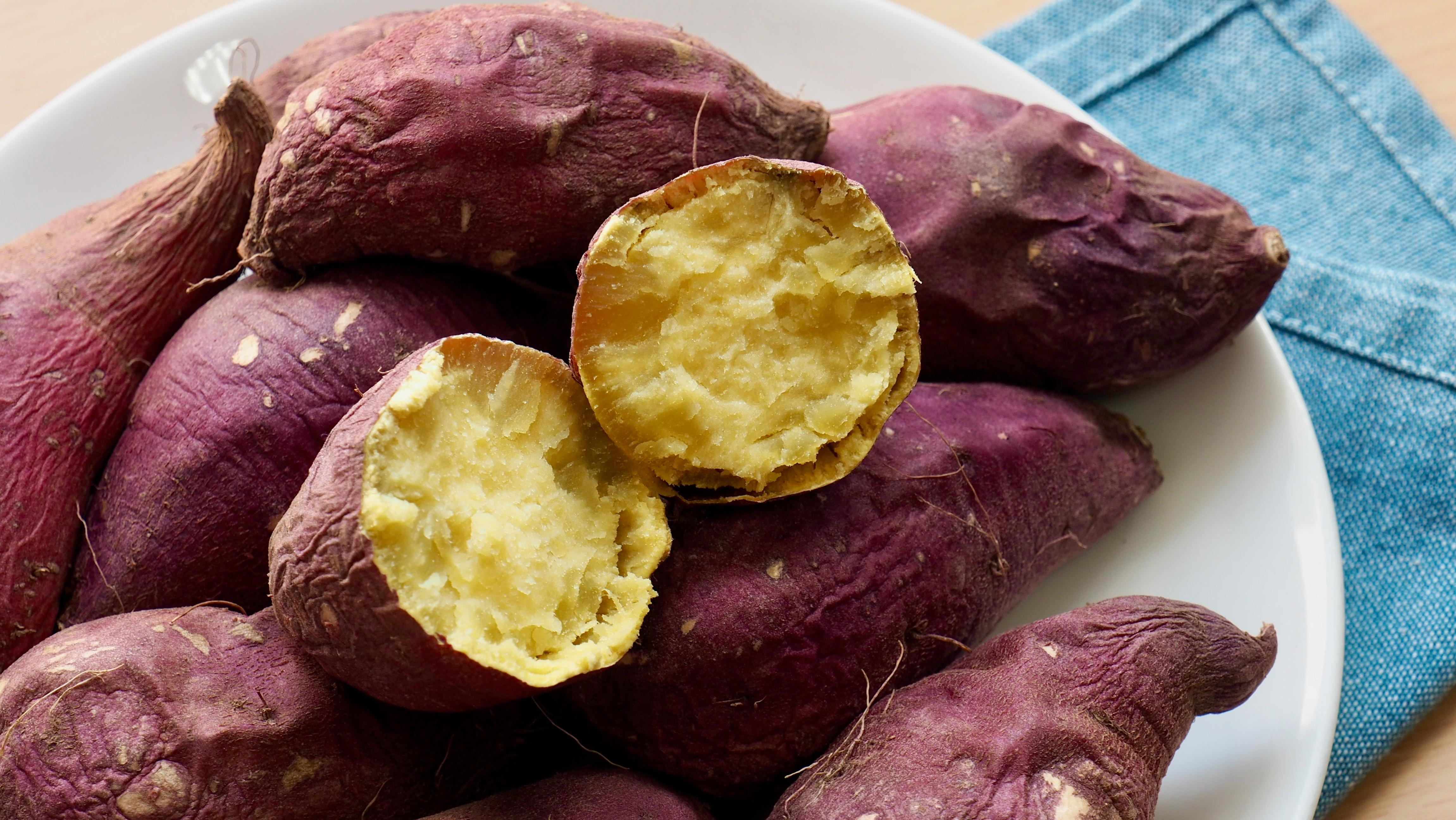Korean Sweet Potatoes Are In A League Of Their Own
Goguma is about to be your new favorite kind of sweet potato.
When you think about sweet potatoes (who doesn't?), I'm guessing you're probably imagining a tan specimen with a slightly orange hue to it. And when you crack it open, you're visualizing an even brighter shade of orange, along with a sweet starchy interior. One of the cool things about sweet potatoes is that they come in different varieties, like the irresistible Filipino purple yam, ube. However, what you might not know is that the sweet potatoes in Japan and Korea are their own version altogether, and they're beloved because they're freakin' delicious.
What makes Korean sweet potatoes unique
In Korea, sweet potatoes are called goguma. Their skins are purple, and their interior flesh is off-white or slightly yellow. When roasted, the interior is a little dryer than the orange kind, and the meat, so to speak, takes on a distinct chestnut-like flavor. (You can also find the same exact sweet potatoes in Japan.)
Because they're always served piping hot, you can imagine then that they're particularly popular in colder seasons like fall and winter. Unlike the States, where we like to adorn our sweet potatoes with seasonings, condiments, or butter, these guys are just eaten roasted as a snack sold on the street, as-is. Our local H Mart location even has a little heated display where you can grab one that's ready to go.
They are readily available in Asian markets, if you want to go pick some up yourself, and I've seen them pop up in some other pretty cool places too.
How to enjoy goguma
One of my favorite non-traditional ways I've seen goguma used is in baked goods. There's a Korean bakery chain called Tous Les Jours, which serves goguma in a mousse that's inside a filled bun, and it's also used there in one of the best cakes I've ever eaten. In fact, those cakes are so goddamn good I ask for one from my family for special occasions, like my birthday.
If you're making goguma at home, prep and cooking couldn't be easier. All you need to do is poke some holes in them with a fork, then roast them off at 400 degrees F for about an hour, or until they're tender all the way through when pierced with a knife. Once they've cooled off enough to touch, you can peel them (the skin comes off in easy strips) and eat them just as they are, no frills necessary. Pick up a couple the next time you're out. While you're at it, could you bring me some too?
